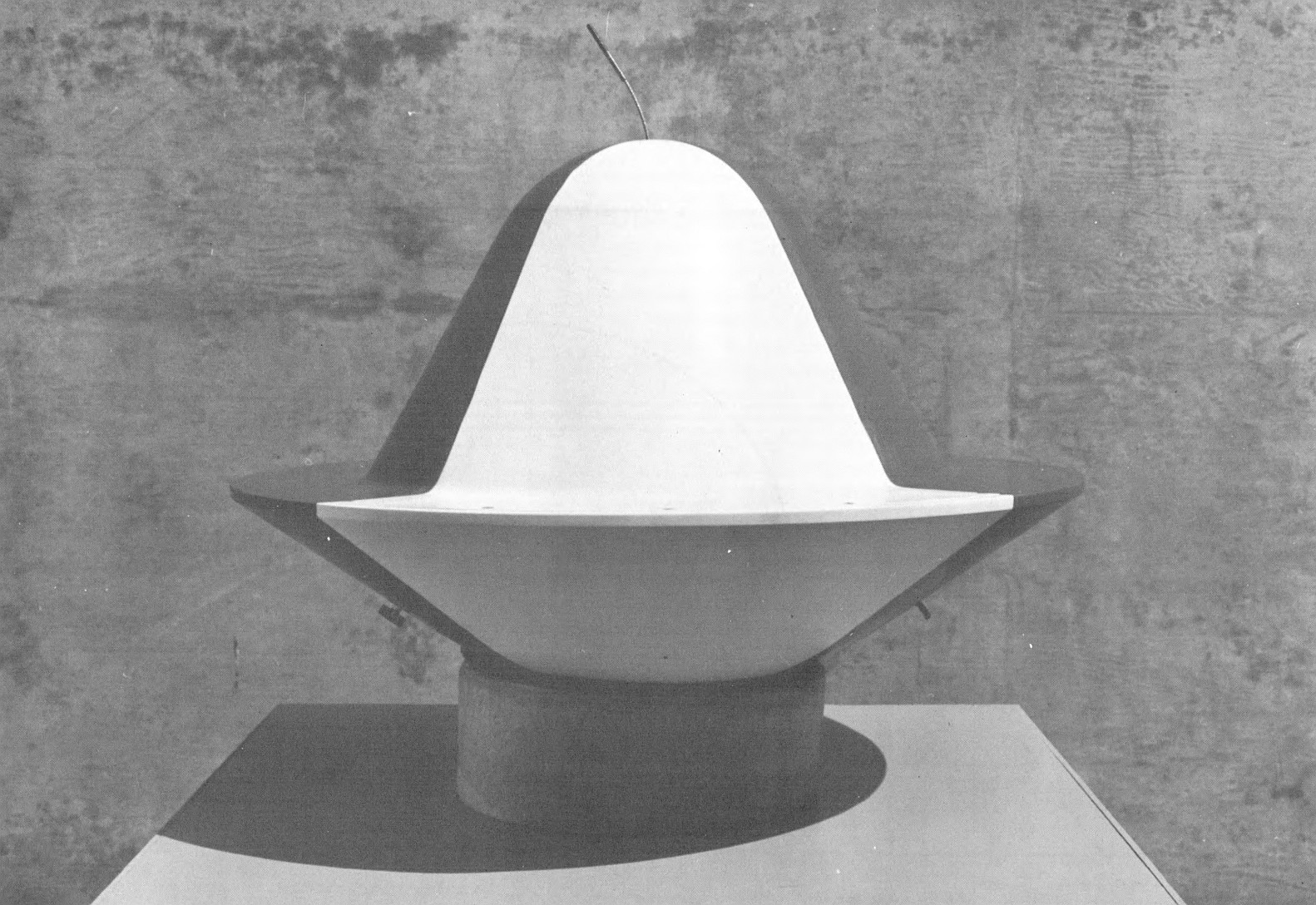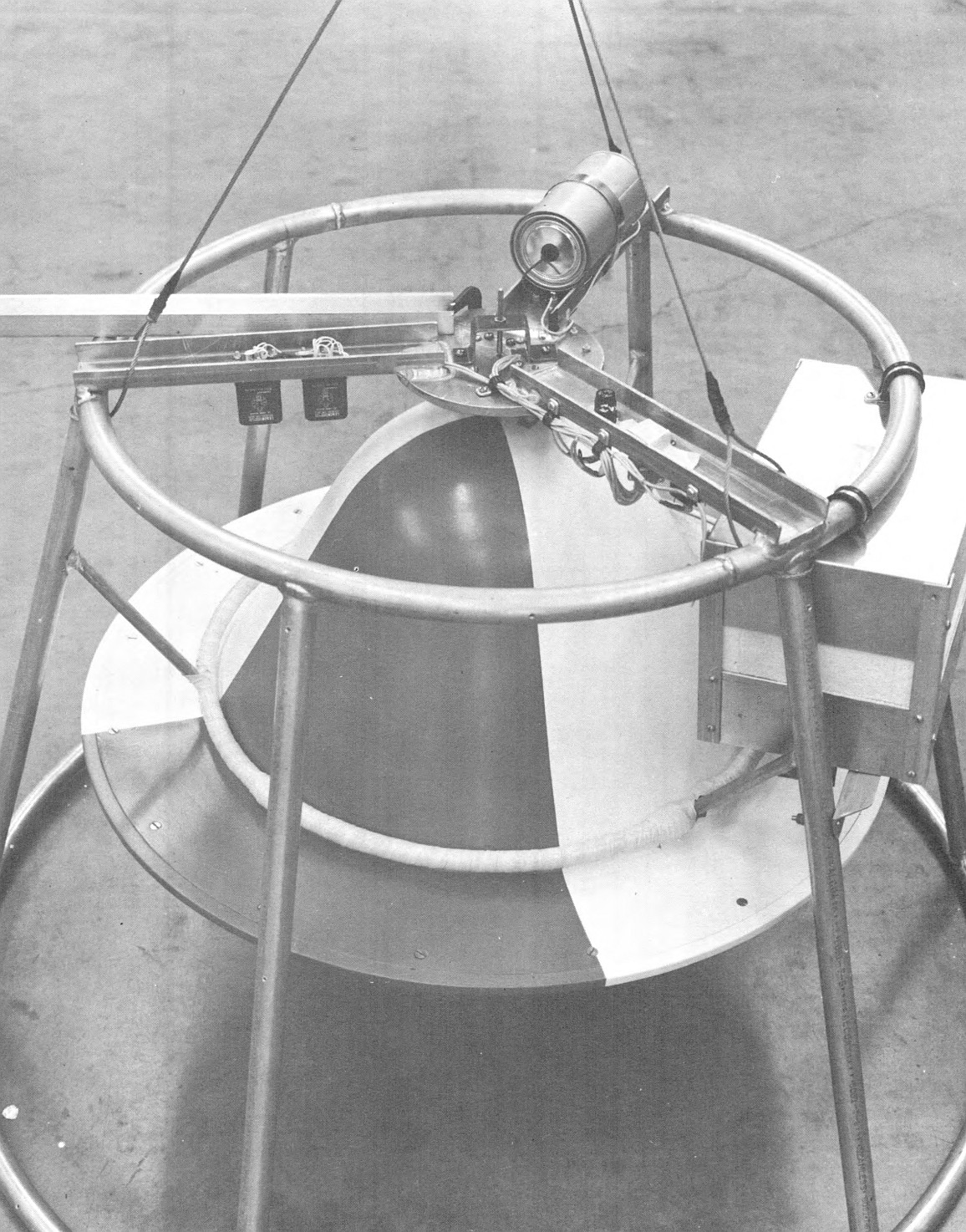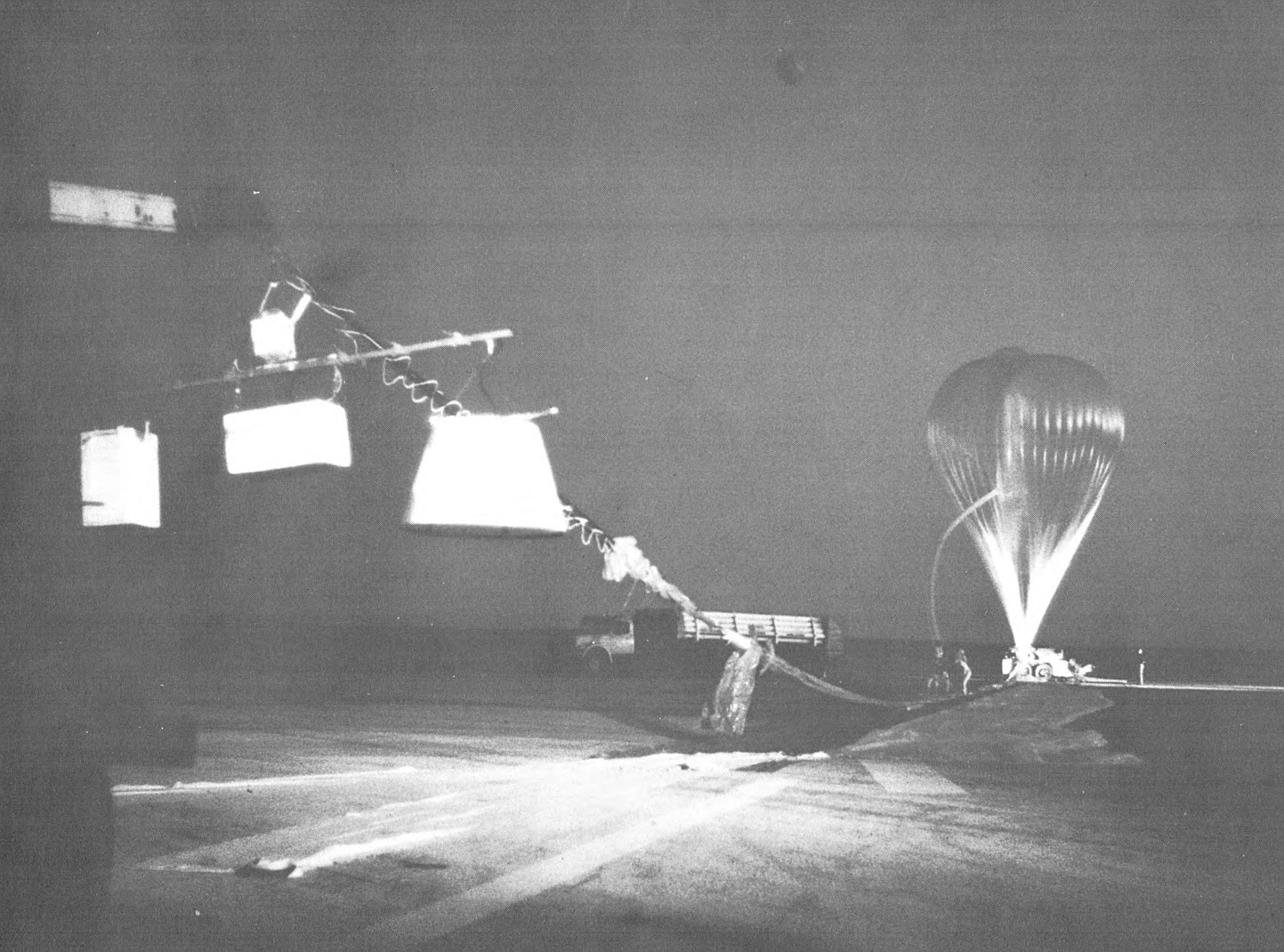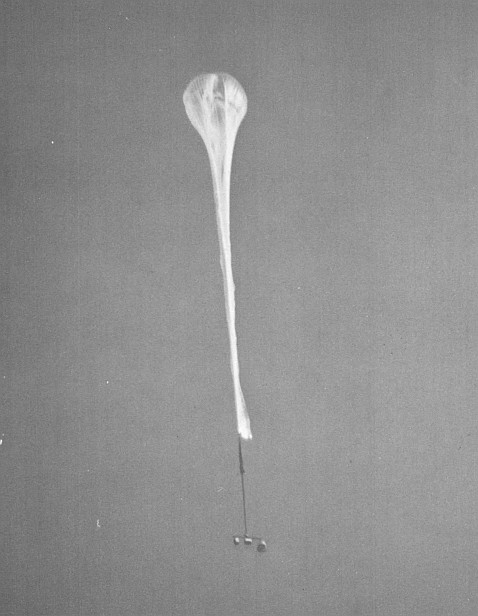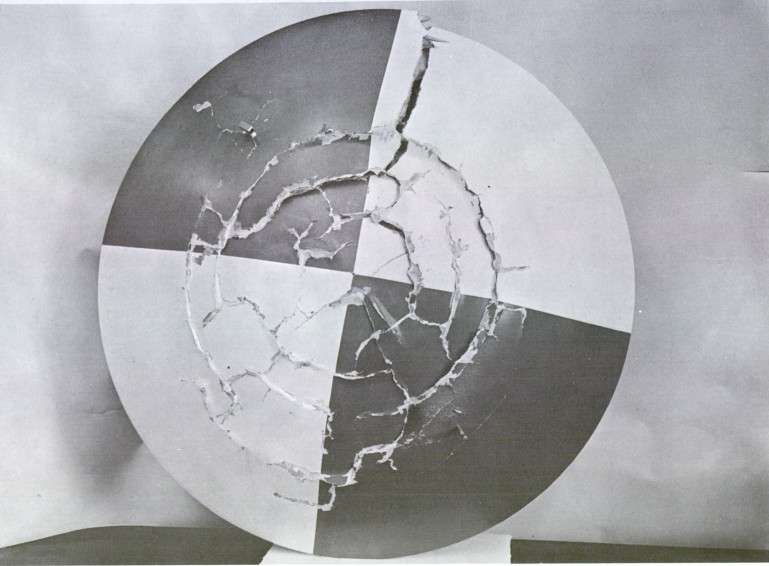Purpose of the flight and payload description
Objective of the flight was to evaluate methods for determining planetary atmospheric structure from on-board measurements using specially designed and instrumented capsule. It was developed and tested by the Ames Research Center of NASA, with support from the Air Force Cambridge Research Laboratory (AFCRL) and assistance from personnel at the Department of Defense Joint Parachute Test Facility in El Centro, California, and the White Sands Missile Range (WSMR), New Mexico, which handled balloon operations, radar tracking, and meteorological measurements.
The probe itself (which can be seen in the images at right) was a modified blunted cone with a 55° half-angle round nose and a conical afterbody. It weighed 37 pounds (16.78 kg) and had a diameter of 30.5 inches (0.77 m). The forebody was constructed from end-grain balsa wood sandwiched between two fiberglass layers, reinforced with a hardwood hoop and filled with plastic foam. The afterbody was made from thin fiberglass, internally supported by plywood and glass fiber longerons to prevent structural failure. The probe was designed to progressively collapse upon impact to protect the internal instruments.
To ensure stable flight, the center of gravity was deliberately adjusted by adding ballast and was experimentally verified in a drop test from a helicopter. The capsule that initially tumbled was modified by shifting the center of gravity forward by 1.25 inches (3.18 cm), which successfully stabilized its descent.
Instrumentation included a novel vibrating-diaphragm pressure transducer developed at Ames, located at the stagnation point and forebody, along with commercial unbonded strain-gage pressure cells placed at various locations, including the afterbody. Two platinum resistance thermometers were mounted on the conical forebody, positioned outside the boundary layer and shielded to minimize radiative heating. Three mutually perpendicular linear accelerometers were installed so that their sensitive axes passed through the model's center of gravity. A 10-channel FM-FM telemetry system transmitted continuous data on pressure, temperature, and acceleration to ground stations, starting 10 minutes before release and continuing through to impact.
The telemetry system also featured a flight-calibration capability triggered whenever the transmitter was activated. The entire system was enclosed in a metallic RF shield to protect it from interference. The balloon flight and drop sequence were carefully managed using a tubular hanger, a radio-command system, and explosive cable cutters to release the probe. The supporting electronics and batteries were housed in a beam system suspended below the balloon. After capsule release, the remaining components were safely returned by parachute.
Details of the balloon flight
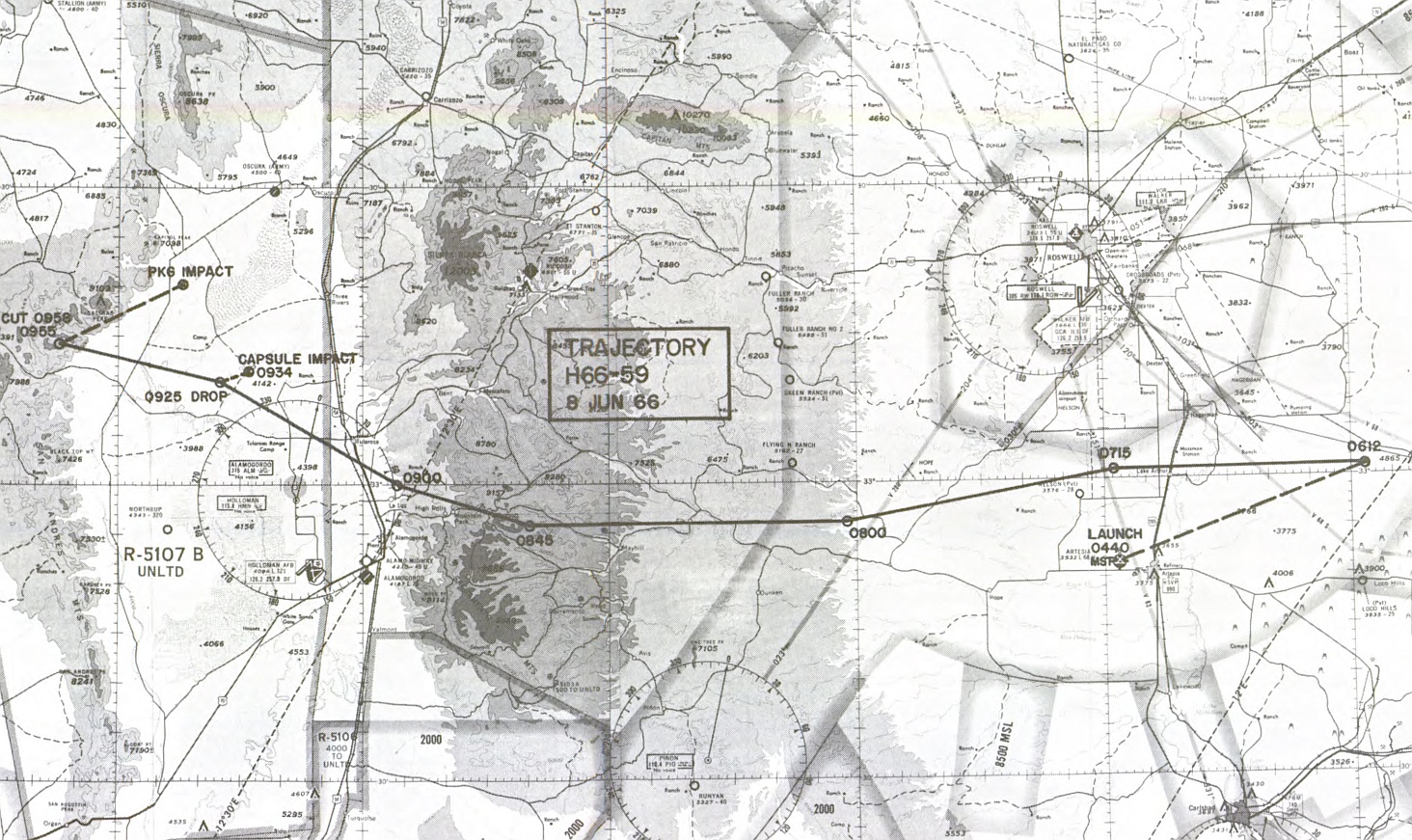
Balloon launched on: 6/8/1966 at 4:40 mst
Launch site: Artesia, New Mexico, US
Balloon launched by: Air Force Cambridge Research Laboratories (AFCRL)
Balloon manufacturer/size/composition: Zero Pressure Balloon 4.850.000 cuft (0.75.mil)
Flight identification number: H66-59
End of flight (L for landing time, W for last contact, otherwise termination time): 6/8/1966 at 9:55 mst
Balloon flight duration (F: time at float only, otherwise total flight time in d:days / h:hours or m:minutes - ): 5 h 25 m
Landing site: In the White Sands Missile Range, New Mexico, US
Payload weight: 402 lbs
The capsule was transported aboard a high-altitude balloon launched at 4:40 MST on June 8, 1966 from Artesia, New Mexico to allow the balloon to overflight the White Sands Missile Range where the probe was released from approximately 130,000 feet (39.6 km) at 9:25 MST, impacting the ground at 9:34 MST. A half hour after the capsule was released the control equipment was cut loose from the balloon and recovered by the parachute.
The recovered capsule is shown in the last figure at right. The concentric ring failures coincided with the joints of the balsa wood blocks used in the sandwich construction of the capsule forebody. The two temperature sensors are visible. The capsule impacted in loosely packed sand at a velocity of about 90 ft/sec (27.4 m/sec). Just prior to impact the probe rotated at about 6 rpm about its longitudinal axis.
External references
- Balloon Flight Record Facilities for Atmospheric Research Nº 1, Fall 1966
- The structure of an atmosphere from on-board measurements of pressure, temperature, and acceleration NASA Technical Note Nº D-3933 (1967)
13810If you consider this website interesting or useful, you can help me to keep it up and running with a small donation to cover the operational costs. Just the equivalent of the price of a cup of coffee helps a lot.

